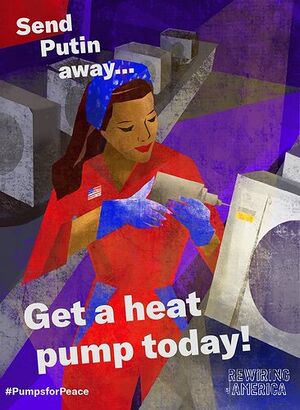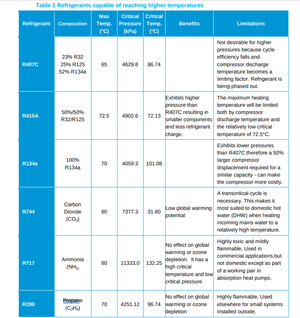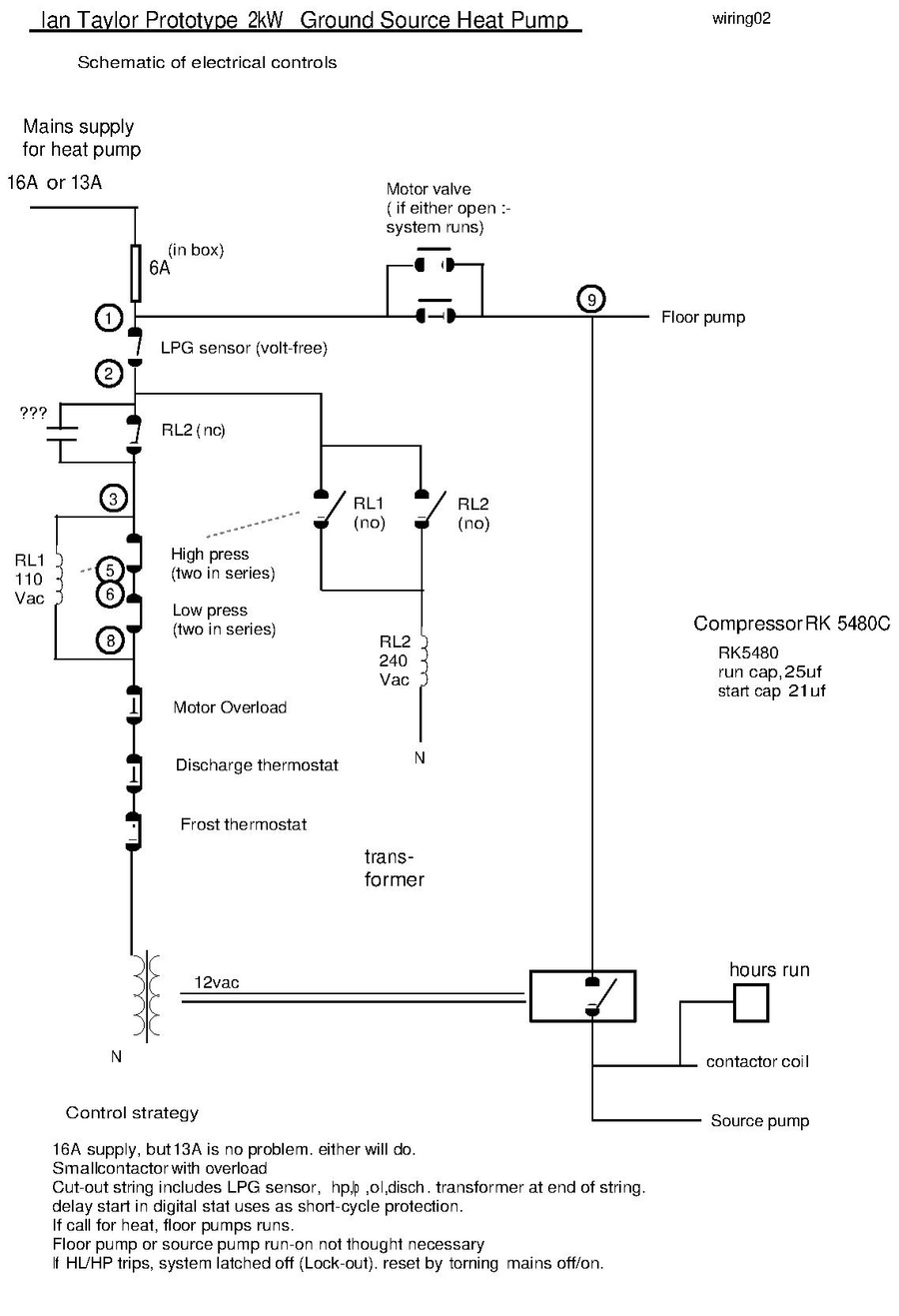
This project is to develop a low-cost open source heat pump for the purposes of reducing fossil fuel use for heating to reduce climate forcing and funding of the Russian military. Installing a heat pump is one of the top three things people can do to hinder Russian aggression in the long term
Understanding the market[edit | edit source]
In general open source hardware has been found to be lower cost that proprietary offerings so it is reasonable to presume open sourcing the design for a heat pump that can be manufactured in a distributed process could reduce the cost and thereby increase the rate of adoption. Heat pumps are already marginally economic in some places in the US, particularly when they are coupled with photovoltaics see:
- Economics of Grid-Tied Solar Photovoltaic Systems Coupled to Heat Pumps: The Case of Northern Climates of the U.S. and Canada for natural gas and for
- Decarbonizing rural residential buildings in cold climates: A techno-economic analysis of heating electrification for propane.
Basics of a heat pump[edit | edit source]
 CC-BY-SA License v4.0](/w/images/thumb/c/cb/M_Valden_Heat_Pump_Controller_model.jpg/300px-M_Valden_Heat_Pump_Controller_model.jpg)
A heat pumpW is a device that transfers thermal energy between spaces, usually between an enclosed space and the outdoors. When used to heat a building, the energy is transferred from the outside into the building. A heat pump can also work as an air conditioner by transferring heat from the building to the outside.
Because of their high efficiency and the increasing share of fossil-free electricity, heat pumps can play a key role in energy transition and climate change mitigation. With 1 kWh of electricity, they can transfer 3 to 6 kWh of thermal energy into a building.[1]
The process is based on the refrigeration cycle. In heating mode, a refrigerant at outside temperature is being compressed. As a result, the refrigerant becomes hot. This thermal energy can be transferred to a central heating system. After being moved outdoor again, the refrigerant is decompressed. It has lost some of its thermal energy and returns colder than the environment. It can now take up the surrounding energy from the air or from the ground before the process repeats. Compressors, propellers and pumps run with electric energy.
Existing OS heat pump projects[edit | edit source]
- Valden Heat Pump Controller- The Valden Heat Pump controller is an open source platform to precisely control heat pumps. This controller can be used for the automation of newly built Heat Pumps (HPs), as a repair controller for old systems or as control system for performing experiments on refrigeration equipment. View Valden Gerber on Altium
- Heat pump PCB on Easyeda
- Open Heat Pump Monitor - Github
- Hacking heat pumps on Youtube
Project goals[edit | edit source]
Version 0.1
- Create a low cost air source heat pump with the following properties:
- Assembled from widely available, affordable components
- Coeffiecent Of Performance (COP) greater than 3
- Noise of <50 DB at 1m
- Providing ~4Kw of heat
- Single phase electicity supply
- Designed for circular economy/ dissassembly/ repair
- That can be assembled locally through much of the world
- Using open source hardware and software electronics/ controller
- Compatible with PV systems ~1Kw > ~10Kw
- Develop a strategy for regulatory compliance.
Version 0.2
- Create a low cost air source heat pump with the following properties:
- Fully open source heat pump
- That can be manufactured locally through most of the world
- Uses waste materials whenever possible
- Designed for circular economy/ dissassembly/ repair
- Coeffiecent Of Performance (COP) greater than 3
- Noise of <50 DB at 1m
- Providing ~4Kw of heat
- Single phase electicity supply
- Validate and test the system and provide guide to field testing
- Compatible with PV systems ~1Kw > ~10Kw
- Provide full software, hardware, firmware and monitoring
- Facilitate peer production of the open source heat pump all over the world through fablabs, makerspaces and open hardware businesses
- Develop a strategy for regulatory compliance.
Basic Components[edit | edit source]
An air source heat pump system generally consists of an outdoor unit and an indoor air handler unit..
Outdoor Unit[edit | edit source]
- Coil 1: The coil operates as either a condenser (in cooling mode) or an evaporator (in heating mode). Note the coil is essentially a heat exchanger -- and there is more efficient geometries for a heat exchanger
- Fan 1: The fan blows outside air over the coil to facilitate the heat exchange. The fan is made up of a motor and blades.
Indoor Unit (air handler)[edit | edit source]
- Coil 2: The coil acts as an evaporator (in cooling mode) or a condenser (in heating mode).
- Fan 2: extracts the heat and moves it into the building
Refrigerant[edit | edit source]
- The refrigerant is the substance that absorbs and rejects heat as it circulates throughout the heat pump system. To start on material selection:
| Type | Name | Notes | |
|---|---|---|---|
| R290 | Propane | Is probably the favourite to use, and its a lot lower pressure and easier. There should be no lubrication problems. | |
| R600(a) | Butane/ Isobutane | ||
| R717 | Ammonia | Toxic | |
| R134A | - | will be phased out | |
| R407 | - | will be phased out | |
| R410 | - | will be phased out | |
| CO2 | Carbon Dioxide | CO2 is much higher pressure, and I would expect to to be a lot more work to design. Possible? |

]
Compressor[edit | edit source]
- A compressor pressurizes the refrigerant and moves it through the indoor and outdoor unit. There are a number of types of compressor
Scroll compressors
Also called spiral compressor, scroll pump
Something similar to the Copeland ZH06KCU-PFZN might be suitable
Creative commons paper on oil free scroll compressors
This rotary compressor might be interesting
This Select 8 tool might be useful Copeland scrolls or Hawco recommended by Heatpumps.co.uk (particularly good intro resource)
Reciprocating compressors
Use pistons driven by a crankshaft.
Reversing Valve[edit | edit source]
- Reversing valve - allows a heat pump to be used as an air conditioner (e.g. switch between heating and cooling).
Expansion Valve[edit | edit source]
- Expansion Valve - regulates the flow of the refrigerant, allowing for a reduction of pressure and temperature of the refrigerant.
0.1 Design[edit | edit source]
| Supplier | Part no | notes |
|---|---|---|
| Compressor | RK5480C | 1 |
| Condenser | Plate Alfa Laval CB52 16 or 12 plate | 1 |
| Evaporator | Plate Alfa Laval CB52 16 or 12 plate | 1 |
| Suction-liquid heat-exchanger | Fabricated from copper | 1 |
| TEV | Parker SE-1/2-1.1/2VW R22/407C- 3/8", 1/2" | 1 |
| Accumulator? | May not be needed - already fitted to compressor | 1 |
| Drier | 1/4" Drier C-052 | 1 |
| Sight glass | 1/4" SA12s | 1 |
| HP high pressure cutout | 061F7505 261 psi, 20 bar Button auto cutout | 2 |
| HP high pressure cutout | 061F7508 377 psi, 20 bar Button auto cutout | 1 |
| Low pressure cutout | 061F7525 25 psi, 1.72 bar Button auto cutout | 2 |
| Low pressure cutout | 061F7522 10 psi, 0.69 bar Button auto cutout | 1 |
| Pipework | 1/4", 3/8" liquid and discharge, 3/8" suction. | |
| copper fittings | 1/4" tees | 3 |
| 3/8" tees | 4 | |
| 1/2" tees | 1 | |
| 5/8" tees | 2 | |
| 3/8" to 1/4" m-f reducer | 5 | |
| 5/8" to 1/2" m-f reducer | 4 | |
| 7/8" to 1/2" m-f reducer | 1 | |
| charging ports | 1/4 charging port with 1/4" copper tail | 2 |
| Electrics | ||
| Compressor contactor | Moeller | |
| Compressor overload | Moeller 2.5 to 4A | |
| Digital thermostat | Eliwell IC902 | |
| Transformer | 12v Eliwell | |
| box and connectors | 220 x 200 x 140 | |
| Frost thermostat | Auto reset. (Calorex type) | |
| Discharge thermostat | Manual reset | |
| Indicator lights | ||
| Hours-run meter | ||
| isolation switch |
There is a.XLS version of the above table that includes calculations
Notes:
- The non-return valve was simply to help the compressor' soft start'.
- The non-return valve seals better than the simple non-return valve in the compressor, so after the compressor stops, the pressure tends to drop on the discharge of the compressor as it leaks back to the low-side.
- The compressor has a delay-start (in the thermostat, and starts with less pressure across it. The compressor is Low Starting Torque, so this detail is important.

Assumptions. UK context:
- 5c <> +30c Ambient air
- 1c <> +26c 500 litres of water & 30% Glycol available externally to mediate these temps. (-12c freezing point)
Fixed 4.4kW and 6.2kW units in one box (total 10.6KW) would give somewhat variable output.
| Description | Link | $US | £GBP |
|---|---|---|---|
| Compressor | ZH04KCU-PFZN | ||
| Description | Link | $US | £GBP |
|---|---|---|---|
| Compressor | ZH06KCU-PFZN | ||
-
Sample caption text.
-
-
More sample caption text.
-
-
Even more sample caption text.
Regulation[edit | edit source]
USA
Canada
Europe
CE marked electrical goods
UK
- CE marked electrical goods, the 'product' would need CE marking.
- Installed by 'compotent person' (electrician) who should lssue a BS7671 Electrical Installation Certificate & Building Regulations Compliance Certificate.
- To be eligable for renewable credits should also be MCS certified
Describe your costs here.
| Header 1 | Header 2 | Header 3 |
|---|---|---|
| Row 1, cell 1 | Row 1, cell 2 | Row 1, cell 3 |
| Row 2, cell 1 | Row 2, cell 2 | Row 2, cell 3 |
Research Questions[edit | edit source]
Peer-reviewed paper topic ideas and research questions:
- Literature review on small-scale heat pumps
- Develop OS Arduino compatible testing rig for small-scale heat pumps
- Validation Valden Heat Pump Controller
- Validation of Open Heat Pump Monitor
- Can commercial air-conditioners be hacked into heat pumps? If so, what COP? Cost analysis? Environmental performance
- Distributed manufacturing of components to reduce costs
- 3D printable or distributed manufacturable reversing valve: Design, testing and performance validation, economics
- 3D printable or distributed manufacturable expansion valve: Design, testing and performance validation, economics
- 3D printable or distributed manufacturable condenser: Design, testing and performance validation, economics
- 3D printable or distributed manufacturable heat exchanger: Design, testing and performance validation, economics
- 3D printable or distributed manufacturable compressor: Design, testing and performance validation, economics
- 3D printable or distributed manufacturable transformer: Design, testing and performance validation, economics
Discussion[edit | edit source]
Your discussion.
Next steps[edit | edit source]
The next steps.
Commercial projects[edit | edit source]
Some commercially available CO2 based pumps
Denso 'residential'
Klima-Therm.co.uk 14KW +
purethemal.co.uk 15KW +
Cooltherm.co.uk 51KW +
clade-es.com 200KW +
References[edit | edit source]
- ↑ "Wärmepumpen mit Prüf- / Effizienznachweis (heat pumps with efficiency validation)" (in German). BAFA (Federal Office for Economic Affairs and Export Control in Germany). Retrieved 2022-02-20.
Contact details[edit | edit source]
Add your contact information.
